SiFive Announces First RISC-V OoO CPU Core: The U8-Series Processor IP
by Andrei Frumusanu on October 30, 2019 10:00 AM EST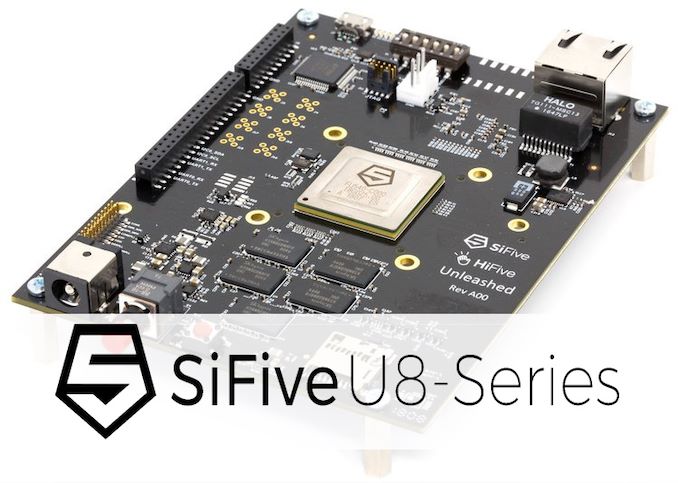
In the last few year’s we’ve seen an increasing amount of talk about RISC-V and it becoming real competitor to the Arm in the embedded market. Indeed, we’ve seen a lot of vendors make the switch from licensing Arm’s architecture and IP designs to the open-source RISC-V architecture and either licensed or custom-made IP based on the ISA. While many vendors do choose to design their own microarchitectures to replace Arm-based microcontroller designs in their products, things get a little bit more complicated once you scale up in performance. It’s here where SiFive comes into play as a RISC-V IP vendor offering more complex designs for companies to license – essentially a similar business model to Arm’s – just that it’s based on the new open ISA.
Today’s announcement marks a milestone in SiFive’s IP offering as the company is revealing its first ever out-of-order CPU microarchitecture, promising a significant performance jump over existing RISC-V cores, and offering competitive PPA metrics compared to Arm’s products. We’ll be taking a look at the microarchitecture of the new U8 Series CPU and how it’s built and what it promises to deliver.
As a bit of background on the company, SiFive was founded in 2015 by the researchers who invented the RISC-V instruction set at UC Berkeley back in 2010. The company’s goal was to develop and implement CPUs and IP based on the RISC-V ISA and produce the first hardware based on the technology. The company first full-blown CPU IP that was able to run a full OS such as Linux was the U54 series which was released in 2017, and ever since SiFive has been in an upward trend of success and hypergrowth.
Introducing the U8-Series - A Scalable Out-of-Order RISC-V CPU Core
Up until now, it’s been relatively unsurprising that if you’re designing a new CPU based on a new ISA, you first start out small and then iterate as you continue to add more complexity to your design. SiFive’s U5 and U7 series as such have been relatively more simplistic in-order CPU microarchitectures. While offering functionality and being very cost-effective options and alternatives compared to Arm’s low-end and microcontroller cores, they really weren’t up to the task of more complex workloads that needed more raw performance.
The new U8-Series addresses these concerns by massively improving the performance that can be delivered by the new microarchitecture – outpacing the U54 and U74 by factors of up to 5-4x, a quite significant performance jump that we don’t usually see very often in the industry.
The new CPU IP’s performance promises to vastly expand SiFive’s and the RISC-V’s ecosystem viability in end-point products, and really be able to offer alternatives to the embedded Arm products in the world today and in the future.
SiFive’s design goals for the U8-Series are quite straightforward: Compared to an Arm Cortex-A72, the U8-Series aims to be comparable in performance, while offering 1.5x better power efficiency at the same time as using half the area. The A72 is quite an old comparison point by now, however SiFive’s PPA targets are comparatively quite high, meaning the U8 should be quite competitive to Arm’s latest generation cores.


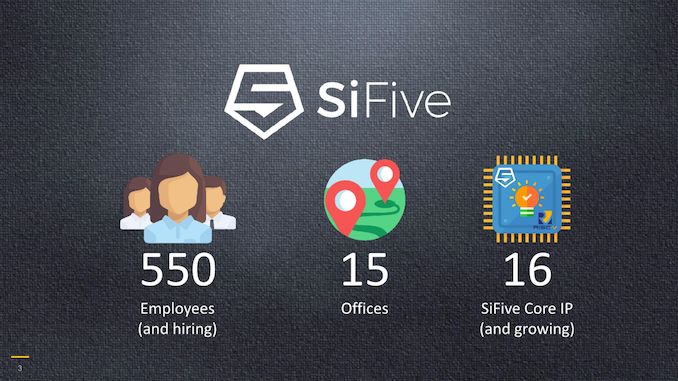

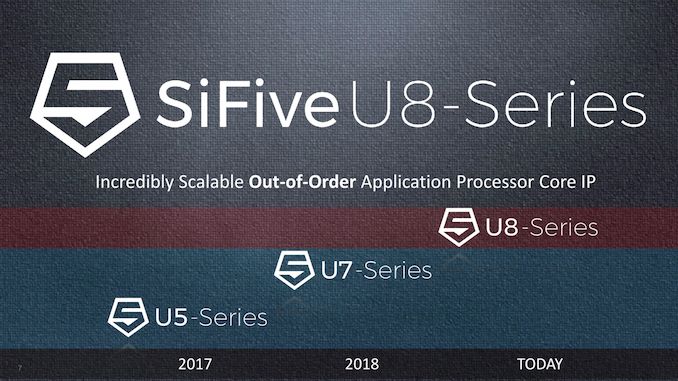
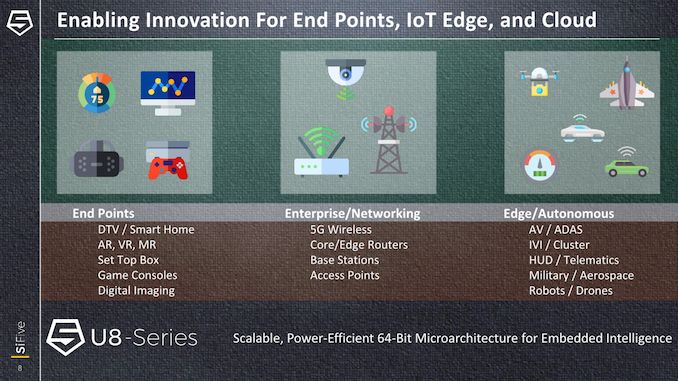
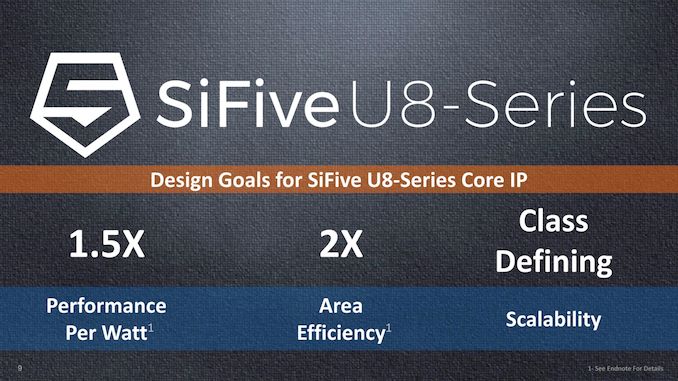








68 Comments
View All Comments
peevee - Tuesday, November 5, 2019 - link
"ARM is literally 80's RISC too"Armv8? No it is not. It has very many complex instructions, more than any CISC CPU from the 80s.
TeXWiller - Wednesday, October 30, 2019 - link
On the other hand you can find demonstrations on how targeting RISC-V ISA can produce smaller end-products compared to targeting ARM or specifically MIPS.Modularity of the ISA is another thing and the most appealing factor still is the open nature of the ISA. This is what likely drives the adoption outside of US academia in companies like WD and in academic-industrial projects in Europe (the exascale accelerator) and India (national ISA). The aim for some schools is to produce graduates directly familiar with an ISA and architectures utilized in the industry without additional training.
I do wonder what effect the variable length instruction ecoding have on security if the system software is lacking on those demanding edge use-cases in the future, though.
Wilco1 - Wednesday, October 30, 2019 - link
Smaller products in what way? Saving a fraction of a mm^2 due to simplified decode is a great marketing story without doubt. However if you look at a modern SoC, typically less than 5% is devoted to the actual CPU cores. If the resulting larger codesize means you need to add more cache/flash/DRAM, increase clock frequency to deal with the extra instructions or makes it harder for a compiler to produce efficient code, is it really an optimal system-wide decision?TeXWiller - Wednesday, October 30, 2019 - link
I meant in terms of codesize as that was one of the bases of the MIPS comparison. Sorry for the confusion.Wilco1 - Thursday, October 31, 2019 - link
RISC-V is very similar to MIPS - MIPS never was great at codesize. When optimizing for size, compilers call special library functions to emulate instructions which are available on Arm. So you pay for saving a few transistors with lower performance and higher power consumption.zmatt - Thursday, October 31, 2019 - link
It's not a MIPS variant. MIPS is based on work at Stanford. RISC-V is the latest incarnation of the Berkeley RISC project. You are probably thinking of SPARC which is a derivative of earlier RISC project work. MIPS is only related in that it comes from similar ideas but the two projects, Stanford and Berkeley were different.name99 - Thursday, October 31, 2019 - link
That's like making a big deal about the difference between Spanish and Portuguese.Sure, if you're Spanish this is a big deal. But to the rest of the world they're basically the same thing; created by people in constant contact and with the same world view.
zmatt - Friday, November 1, 2019 - link
Well, Spanish and Portuguese are different. And claiming they are the same gets you labeled as either an idiot or a bigot.name99 - Friday, November 1, 2019 - link
Are they as different as Portuguese and Arabic? Spanish and Chinese?Are you really so ignorant that you don't know the family resemblance of Romance languages?
Wilco1 - Thursday, October 31, 2019 - link
RISC-V has practically nothing in common with Berkeley RISC-I/SPARC (no condition codes, no register windows etc). Basically Berkeley adopted Stanford's approach to RISC and created a MIPS variant.